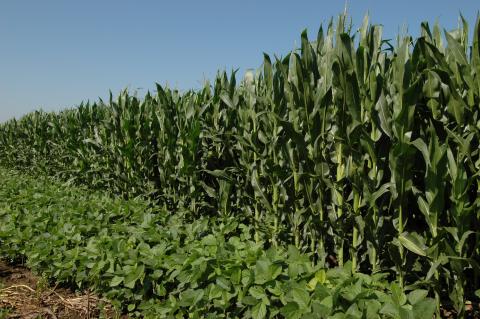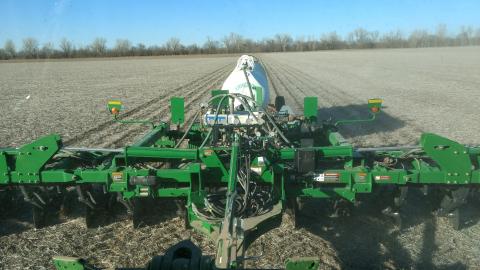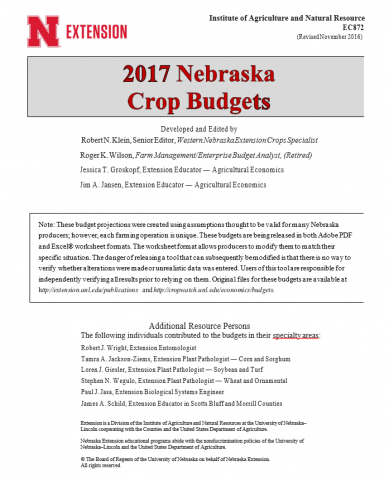Rotation Impact on Irrigated Corn and Soybean Yields in Nebraska
February 23, 2017
On most Nebraska rainfed farms, soybean and corn are usually rotated. On irrigated fields, however, the rotation sequence tends to shift to more years of corn between soybean, and in some cases, corn is grown continuously, year-after-year.
Cutting Costs Without Hurting Yields? Check Fertilizer N Rates in Corn after Alfalfa
February 22, 2017
With tight crop margins for the 2017 growing season, many farmers are looking for ways to cut input costs without hurting yields. One way to do this is by giving the appropriate nitrogen credit when calculating how much N to apply to corn grown after a prior alfalfa crop.
Giving Your Farm a Financial Tune-Up
February 21, 2017
It's common for producers to take their tractors and combines into the shop on an annual basis for a tune-up, but it seems less common for them to take time for a financial tune-up. While the equipment is worth a lot of money, the financial health of your business could be worth even more. This story outlines four steps to help you take stock of your farm or ranch finances and use them for informed decision making.
Things To Consider Before Co-Signing A Loan
February 9, 2017
Parents co-signing loans for their children is common in agriculture. Traditionally, it has happened when a younger producer needs a loan for major purchases such as land, livestock, or farm equipment. Given current low crop prices and thin operating margins, parents also may be asked to guarantee payment of a child's debt when the younger producer is having difficulty repaying a loan. While no one wants to see a financial loss for their children, parents need to carefully consider the potential for losing a significant amount of their savings before signing on the bottom line.
Comparing Generic Versus Name Brand Pesticides
February 9, 2017
When can you save money on pesticides? Research in Nebraska and elsewhere indicates that often generic pesticides may offer similar control at lower prices than brand name products. There may be other reasons for using brand names, which are addressed in the article.
Using Herbicide Prices and Efficacy Ratings to Select for Top Value
January 17, 2017
Take time this winter to strategize your weed management plan. Use Nebraska Extension resources to study herbicide efficacy, mode and site of action, and approximate costs to select products likely to provide the most value in weed control.
Preparing for Farm Loan Renewal Time
January 10, 2017
Shortly before Christmas, I was watching a Christmas movie with my family about a farm family who was in jeopardy of losing the operation if they didn’t come up with the required payments by January 2. It made me wish the struggles of the real farm economy could be fixed in less than two hours. While this isn't possible, there are steps farmers can take to prepare for a meeting with their banker. This story outlines key points to consider.
Using the 2017 Crop Budgets to Focus on Costs
January 20, 2017
The 2017 Nebraska Crop Budgets include 73 crop budgets representing most major Nebraska crops from corn to peas to wheat and a variety of production and irrigation systems. With the challenging agricultural economy, the budgets are one means to identify and focus on specific areas of crop production costs falling above typical costs for your system.







